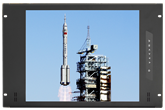What is 1080p?
1080p is a video format with an widescreen Aspect Ratio of 16:9 pushing 1,920 pixels in width by 1,080 pixels in height. The "p" appended to the end stands for Progressive, meaning every 60th of a second all of the pixels are displayed. With "i" or Interlaced video, the odd pixel lines are drwan, then the even pixel lines are drawn, doubling the percived frame rate without the extra bandwidth usage.
Progressive vs. Interlaced?
1080p or 1080i? For the best possible picture in 1080, progressive is the choice. But why?
As stated above, Progressive scans all the lines in each frame and draws them in sequence, or, the entire frame is painted at once. Interlaced video utilizes a technique where the odd pixel lines display half of the frame and in quick succession (1/60 sec), the even pixel lines then display the other half of the frame. With Progressive scan, the "flickering" effect, also known as interline twitter, is harldy to not noticable whereas Interlaced video can reveal this issue depending on the content being shown. Also in Interlaced video, motion artifacts or combing can occur, this will depend on motion of objects within the feild. The faster objects are moving, a slower playback speed or capturing still frames will give a greater chance to the presence of this effect. Take a look at the images below to better understand these phenomenons.


The Interline Twitter example above shows Progressive Frames on the left, Interlaced Frames in the center and Frames using line doublers on the right. The top images are of original resolution and the bottom images use a corrective anti-aliasing filter. While anti-aliasing mitigates issues with the flickering, the image clarity is sacraficed.










